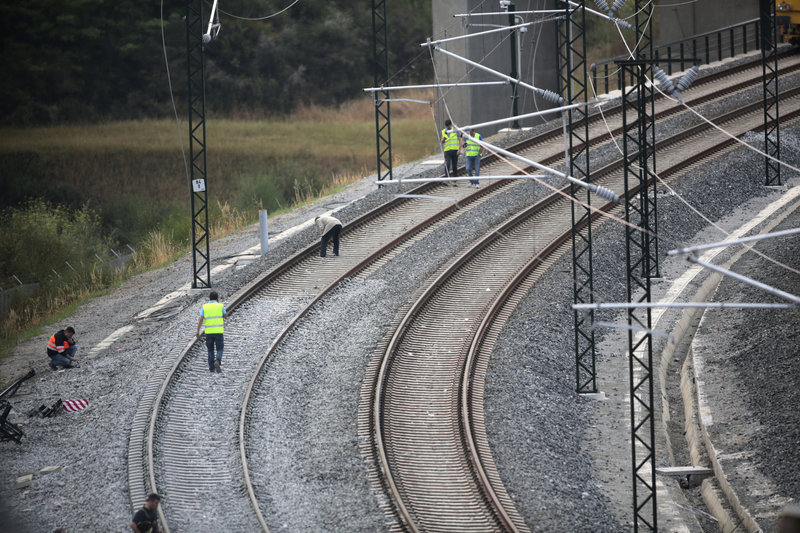SANTIAGO DE COMPOSTELA, Spain – Investigations into Spain’s deadliest train crash in decades have only begun, but already a key question has been answered: Experts said Friday that the driver, not a computer, was responsible for applying the brakes because no “fail-safe” system has been installed on the dangerous stretch of bending track.
The question of whether the brakes failed — or were never used — in the approach to Santiago de Compostela may remain open until police can question the injured driver and analyze the data on the train’s just-recovered “black box.”
Police announced they had arrested 52-year-old Francisco Jose Garzon Amo on suspicion of reckless driving because the train hit the turn Wednesday traveling far faster than its posted 50 mph limit. The train’s eight carriages packed with 218 passengers tumbled off the tracks into a concrete wall, and diesel fuel powering the engine sent flames coursing through some cabins.
As the first funeral ceremonies began Friday night, authorities working from a sports arena-turned-morgue announced they had positively identified 75 of the 78 people killed in the crash.
They lowered the death toll from 80 after determining that some severed body parts had wrongly been attributed to different victims. They said five of the dead came from Algeria, the Dominican Republic, Italy, Mexico and the United States.
Adif, Spain’s railway agency, confirmed that a high-tech automatic braking program called the European Rail Traffic Management System was installed on most of the high-speed track leading from Madrid north to Santiago de Compostela — but the cutting-edge coverage stops just 3 miles south of where the crash occurred, placing a greater burden on the driver to take charge.
Adif spokeswoman Maria Carmen Palao said the driver from that point on had sole control of brakes and when to use them. She said even European Rail Traffic Management technology might not have been powerful enough to stop a speeding train in time.
“Regardless of the system in place, the drivers know the speed limits. If these are respected, an accident should not take place,” she said. “Whatever speed the train was traveling at, the driver knows beforehand what lies ahead. … There’s no sudden change in which a driver finds out by surprise that he has to change speed.”
Send questions/comments to the editors.



Success. Please wait for the page to reload. If the page does not reload within 5 seconds, please refresh the page.
Enter your email and password to access comments.
Hi, to comment on stories you must . This profile is in addition to your subscription and website login.
Already have a commenting profile? .
Invalid username/password.
Please check your email to confirm and complete your registration.
Only subscribers are eligible to post comments. Please subscribe or login first for digital access. Here’s why.
Use the form below to reset your password. When you've submitted your account email, we will send an email with a reset code.